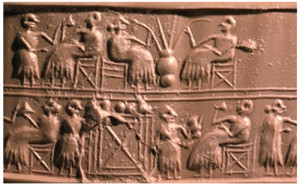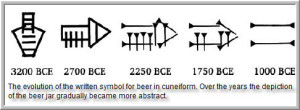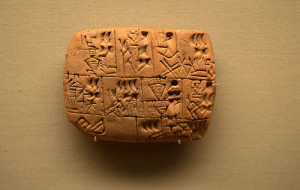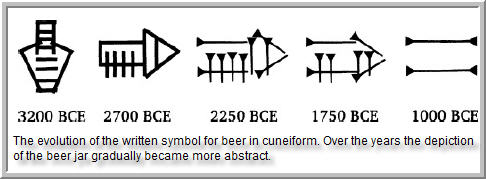
I have never used any mind altering drug that was not pharmaceutical grade. People who put drugs of unknown composition and purity in their bodies are either ignorant (they don’t know the real risks to the brain and mind), stupid (they know the risk and choose to ignore it), or addicted (they know the risk, want to stop, but find that they can’t). ~ Timothy Leary, in a private conversation with Terence T. Gorski.
Terence Gorski posted this quote at the end of a brief essay, “Poison as a Preferred Pleasure.” He first expressed his amazement with how many people today view alcohol and marijuana as harmless. Even more frightening to him was the willingness of people to experiment with new, largely unknown substances in the pursuit of getting high. See my essay on Playing Chemical Whack-a-Mole.
From the earliest times of culture and civilization, humans have pursued intoxication. According to Ronald Siegal, “Throughout our entire history as a species, intoxication has functioned like the basic drives of hunger, thirst and sex. . . . It is as bold and inescapable as the drug stories that dominate today’s headlines.”
The first mention of drunkenness in the Bible is when Noah became intoxicated after he planted a vineyard and ate some of the grapes. He gets naked, passes out and is seen by one of his sons, Ham. But I’m intrigued by the commentary on this story within a Hebrew midrash, Midrash Tanuma. There, the story is that Noah and Satan entered into a business arrangement to plant a vineyard. It was through this partnership, that Noah learned about the intoxicating qualities of wine. Satan’s contribution was to slaughter a lamb, a lion, a pig and a monkey and fertilize the vineyard’s soil with each in turn. What Noah learned from this was:
If a man drinks one glass, he is as meek as a lamb; if he drinks two glasses, he is boastful and feels as strong as a lion; if he drinks three or four glasses, then behaves like a monkey, he dances around, sings, talks obscenely and does not know what he is doing; and if he becomes intoxicated he resembles the pig.
The process of fermenting beverages like wine and beer runs parallel with the transition of humanity from hunter-gatherers into farmers, and eventually to cities and civilization. Beer was most likely a staple of human diets before wine was. It has even been argued that the discovery of the intoxicating effects of beer was a motivating factor for our hunting-gathering ancestors to settle down and become farmers.
 By the time that writing was invented, beer was no longer just an agricultural product of the rural villages. It was one of the surplus products important to the centralized economy of Sumerian city-states. The discovery of administrative cuneiform documents of the production and consumption of beer illustrates the important economic role beer played in Sumerian culture. The earliest known written documents are Sumerian wage lists and tax receipts which contain the symbol for beer, one of the most common words in the documents.
By the time that writing was invented, beer was no longer just an agricultural product of the rural villages. It was one of the surplus products important to the centralized economy of Sumerian city-states. The discovery of administrative cuneiform documents of the production and consumption of beer illustrates the important economic role beer played in Sumerian culture. The earliest known written documents are Sumerian wage lists and tax receipts which contain the symbol for beer, one of the most common words in the documents.

From the beginning, beer had an important social aspect. Sumerian depictions from the third millennium BCE (like that above) show two people drinking through straws from a shared vessel. The technology to filter out the grain, chaff and debris from beer had been developed, but the continued use of straws suggested this was a ritual that persisted even after straws were no longer needed. Perhaps sharing a drink was a symbol of hospitality and friendship. “It signals that the person offering the drink can be trusted, by demonstrating that it is not poisoned or otherwise unsuitable for consumption.”
Beer had a religious role in Sumerian culture as well. The Hymn to Nakasi was simultaneously a song of worship to the goddess of beer and a recipe for brewing beer! See section 6.1 of the article on Sumerian Beer for the text of the hymn. Nevertheless, Sumerian beer was likely consumed in taverns, similar to medieval times. At the end of the hymn, the goddess Nakasi pours out beer for the drinkers, giving her the role of both brewer and tavern-keeper. Women were typically the ones who brewed and sold beer in ancient Mesopotamia.
The Egyptians also excelled in the arts of fermenting wine and brewing beer. Not only were such intoxicants for the living, they were said to be used by the dead in the afterlife. Menquet, the Egyptian goddess of beer, was pictured as a woman holding two jars of beer. Hathor, represented as a sacred bull, was the god of wine. He was duly honored on a monthly “Day of Intoxication.”
The Preacher in Ecclesiastes can help put the latest intoxicant fad with synthetic drugs or new psychoactive substances into perspective: There is nothing new under the sun. From the time human beings first settled down into villages, they have looked for new and better ways of getting high.
What has been is what will be, and what has been done is what will be done, and there is nothing new under the sun. Is there a thing of which it is said, “See, this is new”? It has been already in the ages before us. There is no remembrance of former things, nor will there be any remembrance of later things yet to be among those who come after. (Ecclesiastes 1:9-11)
I have read and used Terence Gorski’s material on relapse and recovery for most of my career as an addictions counselor. I’ve read several of his books and booklets; and I’ve completed many of his online training courses. He had a blog, Terry Gorski’s blog, where he graciously shared much of what he learned, researched and written over the years. This is one of a series of blog posts based upon the material formerly available on his blog and website.





